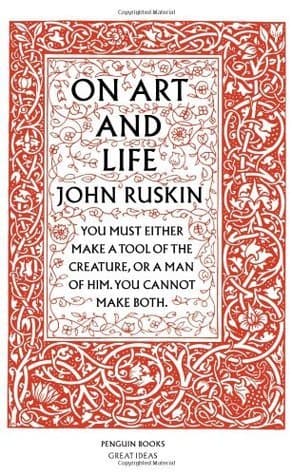
Book Review Summary: On Art and Life (Penguin Great Ideas)
Introduction
"On Art and Life" by John Ruskin is a book that explores the relationship between art and society. Ruskin, an influential Victorian writer and critic, examines the role of architecture in shaping the political, social, and cultural landscape of Britain and other countries. This book is a collection of two essays from Ruskin's famous work "The Stones of Venice," in which he delves into the nature of the Gothic and the work of iron. In this article, we will delve into the author's views, analyze common opinions, and provide reasons for both recommending and not recommending this book.
About John Ruskin
John Ruskin was an English writer and critic who shaped Victorian artistic taste through his books "Modern Painters" (1843-1860) and "The Stones of Venice" (1851-1853). Ruskin was born into a prosperous family that encouraged his literary and artistic pursuits. He received his education at home and rarely associated with other children. Ruskin's father collected art, and his mother encouraged him to dedicate himself to the service of God. Ruskin's views on art, architecture, and society were influenced by his experiences and his exposure to different cultures during his travels.
Analysis of Views
-
The Relationship Between Art and Society: Ruskin believed that art should reflect the social, political, and cultural context in which it is created. He argued that architecture, in particular, has the power to shape societies by reflecting their values and aspirations. Ruskin believed that a society's buildings and structures reveal its collective soul.
-
The Importance of Craftsmanship: Ruskin emphasized the importance of craftsmanship in artistic work. He believed that ideas and the physical labor required to bring them to life have equal value. Ruskin deplored the demeaning of craftsmanship by mass manufacturing and advocated for fair trade and fair compensation for labor.
-
The Gothic as a Symbol of Beauty: Ruskin was fascinated by the Gothic style of architecture, which he saw as a symbol of beauty, emotion, and spirituality. He believed that the Gothic style embodied the values of freedom, creativity, and human dignity that were essential to a just society.
-
The Iron as a Metaphor for Industrialization: In his essay on iron, Ruskin explored the metaphorical significance of iron in relation to industrialization. He saw iron as a symbol of oppression, exploitation, and dehumanization. Ruskin argued that the use of iron in architecture should be guided by ethical considerations rather than purely functional ones.
-
The Value of Imperfection: Ruskin believed that imperfections in art and architecture can enhance their beauty and express the humanity of the creator. He rejected the idea of perfection as a sterile and unattainable ideal, arguing that it devalues the unique qualities of each individual creation.
Reasons for Recommendation
-
Insightful Analysis: Ruskin's views on art, architecture, and society are insightful and thought-provoking. His ability to connect seemingly disparate topics such as buildings, fences, and labor systems provides a fresh perspective on these subjects.
-
Timeless Relevance: Despite being written over a century ago, Ruskin's critiques on industrialization and labor practices remain relevant today. His ideas on fair trade, craftsmanship, and the value of human labor resonate with contemporary concerns about social justice and environmental sustainability.
-
Engaging Writing Style: Ruskin's writing style is engaging and accessible, making it easy for readers to appreciate his ideas even if they have little background knowledge in art or architecture. His passion for his subject matter shines through his prose, making it a compelling read for anyone interested in social criticism or aesthetics.
Reasons for Not Recommendation
-
Classist Assumptions: Some readers have criticized Ruskin's views for being classist, as he often assumes that certain classes of people are inherently inferior or lacking in creativity. This perspective may be off-putting for readers who value diversity and inclusivity in their reading material.
-
Outdated Ideas: While Ruskin's ideas on labor practices and industrialization remain relevant today, some readers may find his views on beauty and perfection outdated or impractical. The emphasis on imperfection may be seen as too subjective or unattainable in a world driven by efficiency and standardization.
Conclusion
"On Art and Life" by John Ruskin offers a unique perspective on the relationship between art, architecture, and society. Through his examination of Gothic architecture and ironwork, Ruskin explores themes of beauty, labor, craftsmanship, and social justice. While some readers may find his views outdated or classist, others appreciate his insightful analysis and timeless relevance. Whether you are interested in art history, social criticism, or simply seeking a thought-provoking read, "On Art and Life" provides a valuable contribution to understanding the interplay between artistic expression and societal values.